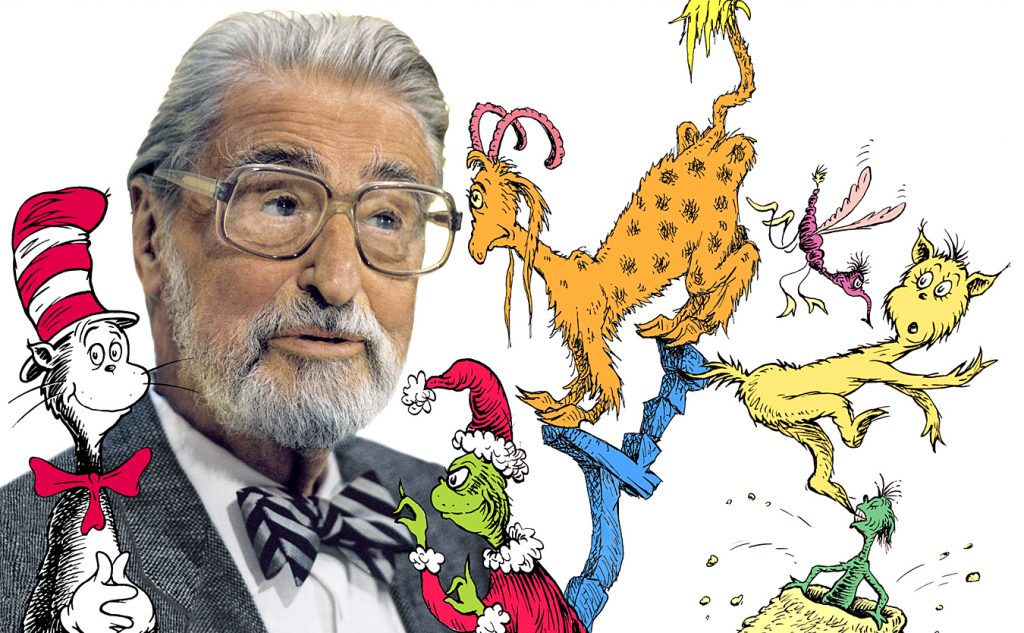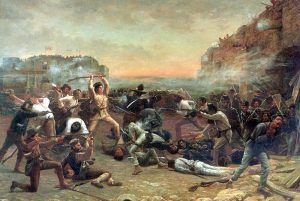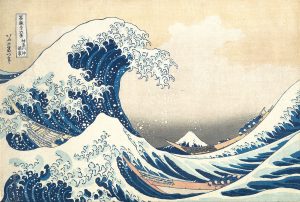Theodor Geisel, beloved children’s author, had a life before he put the hat on the cat. Born March 2, 1904, in Springfield, Massachusetts, Geisel was the only son of German-born immigrants. He spent a normal childhood with his sister and parents, before going to college to become a teacher. Geisel dropped out of college shortly before completing his doctorate in literature. He would eventually turn his almost doctorate and his mother’s maiden name into his now famous pen name, Dr. Seuss.1

In 1927, Geisel decided to turn his passion for drawing and writing into a career in advertising. One of his early successes in advertising was his drawing for Flit insecticide, whose mascot looked very similar to the cat that would eventually wear a striped hat.2 He later created an entire campaign for Essomarine Oil, a division of Standard Oil, called Seuss Navy, in which he designed certificates of membership, pamphlets, and even ashtrays and cocktail glasses that were passed out at trade shows. The Seuss Navy ads ran from 1936 to 1941, and contained many of the sea creatures that would later appear in his books.3 Geisel used many of his made up creatures in various ad campaigns and was the first person to use humor to sell products, altering the advertising industry.4

In 1941, Geisel left advertising to work as a political cartoonist for liberal New York newspaper PM. He drew over 4oo cartoons targeting such topics as isolationism, antisemitism, and racism. He routinely mocked Hitler and Mussolini, but he had a particular flair for attacking American nationalism as well. Believing that the American Nationalist Movement was just another form of fascism, Geisel made Charles Lindbergh a frequent subject of his cartoons.5 After the Japanese attack on Pearl Harbor, Geisel began to use his cartoons to support the war against Japan. He drew cartoons that “depicted Hideki Tojo, the Prime Minister and Supreme Military Leader of Japan, as an ugly stereotype, with squinting eyes and a sneering grin.”6 Geisel was in support of Japanese internment camps and drew several cartoons about them.

It can be hard to imagine that Dr. Seuss could be a racist in his depiction of Asians, but he later admitted that this was exactly the case. At the time, PM did not receive one letter of complaint about Geisel’s stereotypical depiction of Asians, although they received many letters when Geisel mocked the German dachshund, which was popular among American dog owners. Dr. Seuss later said that his 1954 book, “Horton Hears a Who,” written after a trip to Japan and dedicated to a Japanese friend, is meant to be an apology to the Japanese people for his depictions of them during World War II. In the 1980’s, Geisel looked through all his children’s books and removed anything he felt was racist, changing them for any future publication.7
Geisel’s political cartoons ended when he joined the Army in 1943. The now Captain Geisel was assigned to a unit that made training films for the Army, working with the likes of Stan Lee (creator of super heroes) and Chuck Jones (creator of the Road Runner and Wile E. Coyote).8 Geisel and Jones would become life long friends and would work together on various projects, including the animated “How the Grinch Stole Christmas,” which is still shown every year on television.

Geisel’s first children’s book was “And to Think I Saw It on Mulberry Street,” and was published in 1937. However, his writing career almost never happened. The book had been turned down by 27 publishers and Geisel was ready to give up the idea of becoming a children’s author when he ran into an old college friend while walking down the street. His friend had recently become an editor at Vanguard Press and asked Geisel to send him the book so he could show his boss. Geisel would later say in interviews that it was pure luck that he walked down that side of the street that day.9
Dr. Seuss later claimed that he did not like to write books that had a moral or ethical lesson, because children could see a lesson coming and would not want to read the book.10 However, all of Geisel’s books, except his Beginner Books, contained lessons of some sort. Dr. Seuss wrote books with lessons on environmentalism, racial equality, the pointlessness of the arms race, materialism, and respect, just to name a few. He was one of the first children’s authors to write books for children with the respect and care typically reserved for adult literature.11
Dr. Seuss died on September 24, 1991 at his home. He was asked shortly before he passed away to leave a message for children. He wrote “The best slogan I can think of to leave the kids of the U.S.A. would be ‘We can…and we’ve got to…do better than this.’ He then crossed out ‘the kids of.'”12 Dr. Seuss left a legacy of children’s literature that will not soon be forgotten, but he did more than that; Dr. Seuss taught children to think.
- Janet Schulman and Cathy Goldsmith, Your Favorite Seuss (New York: Random House, 2004), 6. ↵
- Louis Menand, “Cat People,” The New Yorker (December 2002). ↵
- Janet Schulman and Cathy Goldsmith, Your Favorite Seuss (New York: Random House, 2004), 55. ↵
- Janet Schulman and Cathy Goldsmith, Your Favorite Seuss (New York: Random House, 2004), 117. ↵
- Sophie Gilbert, “The Complicated Relevance of Dr. Seuss’s Political Cartoons,” The Atlantic (January 2017). ↵
- Sophie Gilbert, “The Complicated Relevance of Dr. Seuss’s Political Cartoons,” The Atlantic (January 2017). ↵
- Sophie Gilbert, “The Complicated Relevance of Dr. Seuss’s Political Cartoons,” The Atlantic (January 2017). ↵
- Janet Schulman and Cathy Goldsmith, Your Favorite Seuss (New York: Random House, 2004), 9. ↵
- Louis Menand, “Cat People,” The New Yorker (December 2002). ↵
- Janet Schulman and Cathy Goldsmith, Your Favorite Seuss (New York: Random House, 2004), 190. ↵
- Janet Schulman and Cathy Goldsmith, Your Favorite Seuss (New York: Random House, 2004), 84. ↵
- Janet Schulman and Cathy Goldsmith, Your Favorite Seuss (New York: Random House, 2004), 190. ↵



125 comments
Caroline Bush
Great article! I remember as a child reading Green Eggs and Ham, The Cat In The Hat and Fox In Socks to name a few. Its interesting to read about Dr. Seuss life before some of his more famous works. Its also interesting to read how he couldn’t get his book published before he asked his friend. I also found it interesting how Seuss depicted Asian people in a resist fashion, I never would have thought that Seuss could be resist. Overall this was a very interesting article that I really enjoyed reading.
Maria Mancha
You have to be lying if you say Dr. Seuss wasn’t an essential part of your childhood. They were some of my favorite books growing up and even some to do this day. I didnt really know about Theodor Geisel life. Like I didnt know Seuss was his wife maiden name, I just thought it was a made up name. And to hear he was racist to Asians completely shocks me, like its something you would never expect especially from his books. His books were written with adult themes to teach children lessons, like the Lorax. I really enjoyed this article because I learned so much about an author whom I had grown up with my entire life.
Maria Esquivel
Dr. Seuss books were my favorite to read as a child, “Green Eggs and Ham … One fish, two fish, red fish, blue fish” being my favorites. I did not expect to learn that Dr. Seuss could have been a racist against Asians, I was surprised to read about that because Dr. Seuss has always been seen as an influential person. I found your article very interesting and it makes me want to go read a Dr. Seuss book now. Great Job, Tyler!
Jose Figueroa
Dr. Seuss, was extremely influential in the lives of many kids for his fantastic children books. For me, it was hard to see him as a racist and would use sensitive stereotypes to poke fun at others, specifically the Japanese. However, he over came this as it was exemplified in Horton Hears a Who. He genuinely cared that children learned to understand equality and respect which is ever important.
Hector Garcia
I remember as a child reading the books of Dr. Seuss and the adventures that the characters embarked on. Everybody as a kid in the United States has at least one Dr. Seuss books and this makes it the perfect topic to talk about. It is the perfect topic because everybody is able to relate to it in some form of way. Overall, I thought that Theodor Geisel’s life journey was really captivating and interesting.
Hanadi Sonouper
This was an interesting article to read, I had grown up reading almost every book that Dr. Seuss had published, but I would have never guessed that his career started off by drawing misrepresenting the early life during WWI. It was a bit surprising to read, but it only illustrates that everyone’s life is not deemed to be perfect or to be illustrated as easy. He was able to accomplish so many wonderful accomplishments and publications in his life that have given children so much joy. Overall the author did an excellent job at selecting this particular aspect of Dr. Seuss and portraying it well.
Anais Del Rio
After I read the article I was pleased to know how he got his pen name for his books which has always been a curiosity of mine. I believe I read it somewhere that Dr. Seuss did not write children’s stories right off the bat rather he worked on political cartoons and went from there. He was not the only one with a similar beginning. Walt Disney began the same way and many of his earlier works have a warning of the content since people today would be sure to create an uproar of it.
Carlos Vazquez
Like most kids, I grew up reading books like “Cat in the Hat” and “Horton Hears a who” and I had never heard the story of Dr. Seuss’ life. I never knew that he served in the army he had a career drawing cartoon for newspapers. His life was incredibly inspiring and it is amazing to see he wanted kids to learn important life lessons. This article was really well written and informative.
Destiny Flores
It’s so interesting how the Dr. Seuss was so much more than just the author of iconic children’s books. He made an impact on the advertisement industry, and even interpreted complex topics in his cartoons such as politics. I wasn’t even aware that the wasn’t his real name! And just his origin story is also very interesting, from where he came from and where his pen name originated from.
Samuel Ruiz
While reading about Dr. Seuss and his former career in advertising and political cartoon creation, it became no surprise to me because of the work he is well known for. I loved this article because it told me a story of someone I looked up to as a child. I grew up with many of his works around and so it was nice to get the full picture and background story.